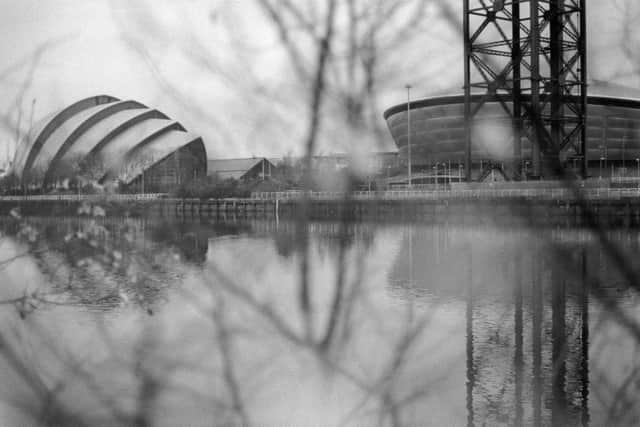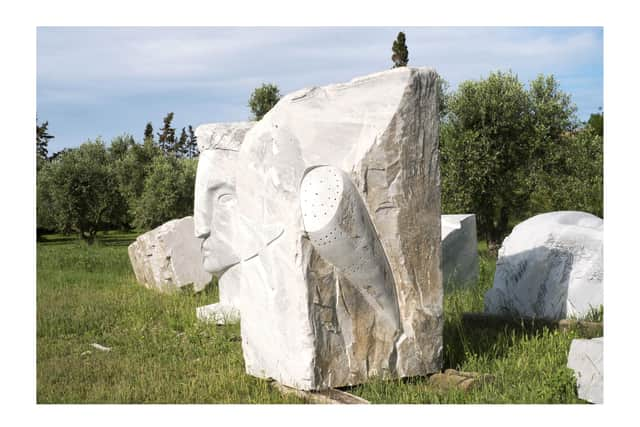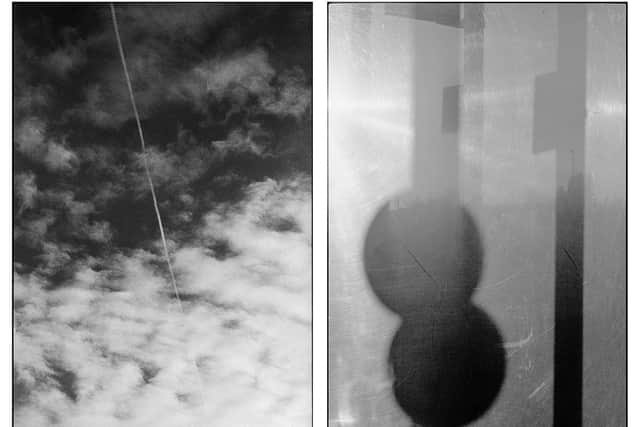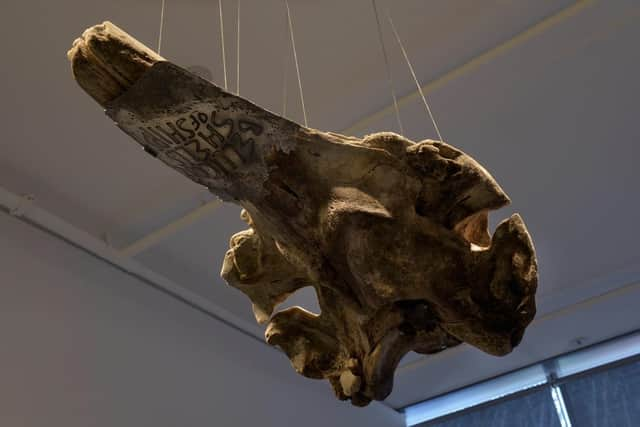Art reviews: Roger Palmer | Futureproof 2022 | Mhairi Killin
Roger Palmer: The Tooth of History, CCA, Glasgow ****
Futureproof 2022, Street Level Photoworks, Glasgow and Stills, Edinburgh ****
Mhairi Killin: On Sonorous Seas, Reid Gallery, Glasgow School of Art ***


Advertisement
Hide AdArtists have been exploring, contesting and expanding the possibilities of photography for as long as people have had cameras. While recent years have brought an increase in those using photography as one element within a fine art practice, this is not new: Roger Palmer, for one, a former Professor of Fine Art at Glasgow School of Art, has been doing it since the 1970s.
Photography is still central to his work, and the focal point of this show at CCA is Bloodstream, a series of 32 silver gelatin prints (which he develops himself), made in lockdown, mapping the course of the river Clyde from east of the city through to the Erskine Bridge.
The precise, delicate images show an un-peopled Glasgow caught in an eerie pandemic moment; the liminal, wild spaces near the river where nature dominates, even in the city; ghosts of old industry rubbing shoulders with today’s landmarks (the Transport Museum, the Armadillo). The river is a key artery, carrying echoes of the city’s imperial and industrial past as well as its post-industrial renaissance. The images are displayed as a chain (a DNA chain, perhaps?), each linked by a small abstract painting also made during the pandemic.
Another recent body of work, Partial Eclipse, was inspired by a residency in the Russian port of Kronstadt near Saint Petersburg, the scene of a mutiny against the Bolshevik government in 1921. Palmer happened to be there during the partial solar eclipse in 2015, noticing, also, that the Russian words for “partial” and “eclipse” appear on Malevich’s painting Composition with Mona Lisa. Place, history and Suprematist art weave around one another in the photographs, and the wall drawing behind them echoes Malevich’s Black Square.


A series of colour photographs finds traces of the Etruscan civilisation in Italy, while another (monochrome) follows the legacy of Etruscan pottery in Josiah Wedgewood’s England. Following the Starry Plough was made by superimposing the stars from an Irish socialist flag on to a map of Ireland, giving seven random locations. The artist spent three days at each taking pictures, before selecting just one image from each: an Orange Hall, a boarded-up house, an urban fox.
Palmer’s work is informed by an awareness of political and economic histories, and after a while, one gets a sense of what draws his photographic eye: abstract shapes, billboards, street art, traces of lost industries. In the best of photographic traditions, these are images made by an artist at large with a camera, often for long periods, looking and looking. They are pictures of places, but are not really about place – he rarely identifies his locations. They are made slowly, and repay time spent. With a further room given over the Palmer’s books, this is a valuable opportunity to explore his work, as well as to see him turn his gimlet eye on his home city in a time of crisis.
Advertisement
Hide AdMeanwhile, the full spectrum of uses for the camera is explored in Futureproof 2022, the annual showcase of emerging photographers, which this year spreads to Stills in Edinburgh. Drawing on new graduates from Photography, Fine Art and Communication Design courses at colleges and art schools, it includes those who would call themselves photographers, as well as the increasing number of artists for whom photography is one piece in a conceptual puzzle.
With 20 artists cheek by jowl in Street Level, no one gets much space. Spencer Dent’s sequence of silhouettes is as arresting as it was at their degree show, the strong abstract shapes somehow challenging the energy of modernism in the 1920s. Theodore Wilkins-Lang’s large-scale portraits also stand out, as does the work of Denise DeLaunay-Wood, whose images of family life have a vivid, candid vulnerability. Phoebe James creates portraits of a different kind using the contents of a person’s bag, accompanied by a snapshot in words.


Advertisement
Hide AdFinn Gibson’s photographs, taken on a solitary journey through the Isle of Lewis, show there is plenty of mileage, still, in the photographer who travels deliberately and looks long and hard. Natalie Dawson does something similar in the Yorkshire Dales, following in the footsteps of her late father. Susan J Whittingham, from Orkney, combined photographs of found shapes in the landscape with the sculptural shapes she makes, and lets the two talk to one another.
The 11 artists at Stills fare better in terms of breathing space. Adam Salmond looks thoughtfully at his home town of Kirkcaldy, channelling something of Palmer with his light touch and delicate observation. Joanna Stawnicka has an eye for the quirky and strange, leaving the viewer to ponder how much is staged and how much accidental, what is “real” and what imagined.
Jess Wishart eschews selection, making hand-bound journals featuring every photograph she takes. Thomas Irving chooses to include his dark room errors as well as “successful” shots. Mark Anthony Burgoyne takes pictures quickly, but seems to choose very carefully, resulting in strong, evocative captured moments. Meg Auld investigates the history of the world’s first dynamite factory, at Ardeer, North Ayrshire, and the women who worked there during both wars.
How to document real events in art is also the concern of Mhairi Killin, whose show On Sonorous Seas is at the Reid Gallery at Glasgow School of Art. Killin lives on Iona, and this work was sparked by the body of a whale washing up at the north end of the island in August 2018. It quickly emerged that this was one of 45 whales washed up on Hebridean islands that month, with more on the west coast of Ireland.


This “unique mortality event” prompted Killin to explore further, spending ten days on board a research vessel with scientists from the Hebridean Whale and Dolphin Trust at the time of NATO-led military exercises in the area, exploring noise pollution in the sea. All of the dead animals were Cuvier’s Beaked Whales, which live in the deepest water, and are therefore most dependent on sonar and echo-location to navigate.
However, this is art, not investigative journalism, and Killin and her team of collaborators – composer Fergus Hall, digital artist Tom deMajo, poet Miek Zwanborn and calligrapher Susie Leiper, among others – concentrate on the evocative and the emotive aspects of the story. Along with whale rib bones and a skull, to show us the sheer scale of the creatures, the heart of the exhibition is A Constellation of Strandings, in which whale ear bones cast in silver map out the locations of the strandings on a black backdrop, and an immersive film of the same name. At 45 minutes, the latter is rather long, but Fergus Hall’s sound composition, made by weaving together hydrophone recordings and human song, is mesmerising.
Advertisement
Hide AdThe decision not to overburden the show with information is a wise one, even if it occasionally leaves the viewer wanting to know more about how the whales died. That story is told in more detail on Killin’s impressive podcast series of the same name.
Roger Palmer: The Tooth of History runs until 23 December; Futureproof until 28 January (at Stills) and 29 January (at Street Level); Mhairi Killin: On Sonorous Seas until 17 December